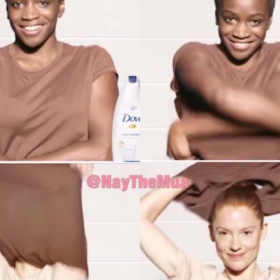Guest writer Nik sheds some light on the world of social media influencing:
*This is an archived article. Since 22 October 2017, LFB is only focusing on Berlin-related topics. Please check out our new platform, YEOJA Magazine, for material like this.
Numbers. As bloggers, influencers, or however you want to self-identify, they’re what matters – they’re what defines us. How influential we are, how popular we are, how likely we are to get work, projects, and free first class flights around the world.
And, we all hate that., deep down. Even those with the biggest numbers hate it. A constant worry that their numbers will slide the wrong way, that their latest post will flop, or that the rest of the chasing pack will overtake them.
We all know that the numbers lie, that the numbers are useless, that to be defined by such a simple metric is so irrelevant, so shallow, and so depressing that it just shouldn’t be allowed to happen.
It does happen though. As things stand, numbers are the principal pillar of the influencer marketing industry. No matter how many articles people throw up, crying that the numbers are false, wrong, or irrelevant, and that content, connections, and community are what really matters, the brands and the marketing agencies want numbers, and as a consequence, so do the influencers.
Wow. This is all very depressing to say aloud, isn’t it?
If numbers rule supreme, maybe it is time for all (rather than just some) of us to invest in some nimble game playing; focus on quality content – for sure – but, also leave a little time for programming a bot or two to boost our follower numbers and increase our engagement scores.
Well, that’s exactly what happens – and we all know what comes next: accusations, recriminations, apologies, denials, threats of legal action, and a collective paranoia, as everyone spends eternity wondering why, how, and who is cheating the system. Doubly depressing. Maybe, instead of investing in those bots, we should just call it a day then? Close down our accounts and wrap up this rotten industry.
We could; but, that would be ‘baby and the bathwater’ territory.
In discussing, debating, and arguing about the intricacies of our industry, we seem to forget what we’re all a part of here; an incredible, game-changing industry, that appeared from almost nothing but the sweat of people’s creative endeavour, bore jobs for many of us, brought fantastic opportunities for most, built new connections, renewed old, and in general, has a far more of a positive impact on the world than a negative one.
So, instead of constantly complaining about the state of the industry, it would be far better to attempt to affect some change.
The question is, how?
To really change our industry, we have to fully understand how we arrived at this point – and only by peeling back the surface of what we do and analysing what lies beneath, will we ever be able to do that.
We all know what’s underneath: it’s the numbers, ‘They’ did it. They’re the fundamental cause of all our problems and maybe – just maybe – if we erased them altogether or simply just ignored them, could we become an industry which only ever rewards quality, credible content over the ability to play (or cheat) the system.
Maybe. It’s an interesting idea. But, it’ll never ever happen.
Marketing has always attempted, and will forever attempt to turn qualitative, human interactions into quantitative measurements. It makes sense. Quantitative measurements allow the world to be easily explained, easily analysed, hypothesised, tested, and played with theoretically. Efficient process, productive growth, and everything else that underpins the commercial process depends on the ability to quantify the qualitative.
When it arrived, the world of digital promised a marketing nirvana. Every element of the entire sales and marketing process could be distilled to digits, perfectly understood, accurately manipulated, with massive gains for all involved.
Here was the flawed logic of the first dotcom bubble. Consumers would buy everything online, so they would be easier to sell to and easier to understand.
They didn’t. They weren’t. They still aren’t.
Social media continues where this bubble left off – with a firm belief that the data collected holds all of the answers, in a simple, easy to read format. Now, consumers don’t just buy online; they talk, listen, engage, and bare their souls – and the social networks take these qualitative interactions, round them up, and record them as a handful of numbers.
As with the dotcom bubble before it, social media continues the tradition of a belief in the absolute accuracy of a quantitative measure of a qualitative interaction. Everyone takes the numbers as red. In our case, they place a firm belief in the numbers as wholly accurate representation of influence.
Influencer A, with 50,000 followers is more influential than influencer B, who only has 5,000 – more influential by a factor of 10, in fact.
This lands us where we are now – an industry that worships a handful of ‘metrics’ and incentivises anyone and everyone to grow these metrics in whatever way they can.
Forget what the numbers attempt to represent. Forget analysing the numbers to check that they’re fit for purpose. Forget casting any doubt on a number’s ability to accurately reflect human engagement, human interaction, or the influence that one person has over another.
After all, these numbers were given to us by West Coast teenagers, who had the necessary genius to construct world dominating companies from their bedrooms. They’re rich, beyond belief. Hollywood made movies out of them. Ergo, they know what they’re doing.
Forget Twitter’s failure to make money, forget Facebook sweating under the microscope of various governments, forget the fact that in the cold light of day, the idea of distilling a human interaction in one, single number is beyond laughable.
We accept the numbers for what they are, because we’ve been told to. 50,000 followers are 50,000 eager, willing, loyal fans, hanging over your every word and ready to buy whatever you tell them to buy.
But, we all know that they’re not, don’t we?
The influence that ‘I’ have over one person is very different from the influence I have over the next person. Even if both people follow me and read my every post; follower 1 is never (and can never) be the same as follower 2.
Some never read my every post. Even the biggest fans of your work won’t. They can’t. They have to eat, sleep, work, go on holiday, and do everything else that their lives entail.
This is before we even get to the non-fans, of course. The bots that follow you – of which there are many, the accounts that follow, but never ‘listen’; the inactive accounts, and those accounts that follow you but hate every word you say (there’ll be some – honest!)
The anatomy of influence is something that needs to be fully deconstructed, analysed, discussed, debated, turned inside out, upside down, and will (probably) never be fully understood.
The one thing that will be, and is understood, is the fact that influence and (as a result) influencer marketing is a deeply complex ‘thing’. It can’t be reduced to a single number or even a small handful of numbers – fact.
So, where does this leave us?
Well, firstly, the industry needs to start looking at itself – closely. The complexity of influence has to be matched with an equally complex response. Brands and marketing agencies, for example, need thorough, rigorous strategies. Strategies that genuinely have the potential to achieve a brand’s objectives; not just another party, event, product giveaway, or Instagram post sold for a few thousand pounds with a grinning influencer kissing a product they’ve never seen before or will again.
Influencers too, need to take a cold, hard look in the mirror. They need to realise that their actions today have an impact on the future of this industry. Sure, using bots, buying followers, and other cheat mechanisms generates success in the short-term; but, it destroys the credibility of influencer marketing and severely damages those same influencers chances of making a living in the future.
The same goes for accepting projects that aren’t a good fit. Yep, everyone has to pay the rent and everyone is tempted when decent dollar signs accompany a project proposal, but again, this is short term gain at the expense of long term success. Brands and agencies will throw the baby (or just that influencer) out with the bathwater if they see no return on the work they’ve done. You might not believe that now, with the money being sloshed around by various brands and agencies, but the gold rush never lasts forever. Brands grow cautious, brands grow savvy, and brands start to scrutinise where they spend their money and who they spend it with.
Finally, the social networks have a big part to play. Obviously, they have a duty to ensure the accuracy and reliability of their services; shutting down those automated services that contravene their terms of service and punishing those people who cheat and abuse the system. They also need to do more (far far more) to enable brands, agencies, and influencers to fully understand their engagement, influence, interactions, and performance,
The current ‘crop’ of social metrics – a follow, a like, a comment – are such small, cheap metrics, with such a huge variability in meaning, that they’re fundamentally impossible to use as a sturdy basis for a strategy without a heavy dose of guess work, experimentation, and assumption.
When brands work with influencers, surely they want to know as much as they can?
I know that I do.
We’re not just talking demographics here – age, gender, location, etc. I want to know how active their audience is, I want to know who (and what) else they follow, I want to know if it’s the same people that an influencer talks to, over and over again, or whether they bring in a new audience each time they post. I want the data and tools to assess the ‘quality’ of an influencer for myself and understand how well they fit the brand, product, or service I’m looking to promote.
These are the sort of statistics that are readily available in other areas of marketing and they’re the statistics that we so desperately need in ours; the statistics necessary for credible influencer marketing strategies to be developed.
Until the social networks throw this data to the world, our industry will always be a wild west; full of cowboy influencers, snake oil selling agencies, and a whole host of other pitfalls that anyone involved in this industry, in any capacity, will struggle to avoid.
The industry can change; the availability of those numbers would trickle upwards, influencers would use them to understand their audience and produce better, more engaging content. Agencies would use them to understand which influencers were best to work with, for a particular client – and brands could do the same. We would all have a far clearer picture of the market and see who was gaming the system, how, and where. The bought followers would be revealed, the bots would be revealed, and what would be left would be a level playing field where those influencers (regardless of size) who had a genuinely strong connection with their audience can shine through.
Nik is an influencer marketing consultant and blogger, writing for men’s lifestyle blog Buckets and Spades. Nik helps brands understand how to work effectively with influencers and how to identify the best influencers to work with. You can find more of Nik at his handle @NikSpeller on instagram and twitter.
–
Photography: Nik Speller, Post-processing: Rae Tashman
![]()





